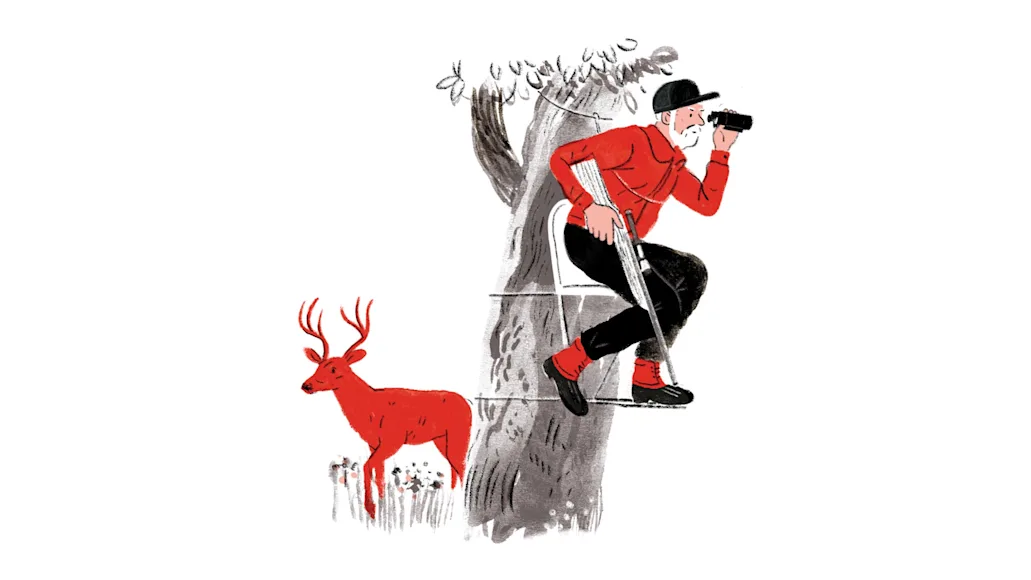ONE SPRING MORNING years ago, I was walking to a bass pond at Catoctin Mountain in Maryland when, for some reason—call it that sixth sense through which God looks after fools—I froze. Beneath my raised foot lay two intertwined copperheads. They were little snakes, less than 18 inches each, and must have just finished mating because they seemed to lie there in a sort of copperhead afterglow. The next thing I knew, I had levitated and come back to earth four paces back. At which point I ran screaming out of the woods.
My personal feeling is that abject terror is our species’s natural and appropriate response to snakes. Monkeys, incidentally, react the same way. I’ve always believed this is hardwired, much like the compulsions to hunt, fish, and understate income on federal forms.
SOMETIMES scientists get bored. When they do, the smart ones undertake self-evident research projects on somebody else’s dime. For example, six researchers at the University of Melbourne decided to swallow Lego figurine heads just to see how long it took to poop them out. Based on their Stool Hardness and Transit (SHAT) scores and their Found and Retrieved Time scores (FART)—I am not making these acronyms up—the average journey of a Lego figurine through an adult digestive tract takes 1.7 days. “This will be of use to anxious parents,” said Dr. Andrew Tagg, “who may worry that transit times may be prolonged and potentially painful for their children.” Dr. Tagg, humanity is in your debt.
Similarly, bored scientists at the Max Planck Institute in Germany decided to see whether our fear of snakes and spiders is innate or learned. Using machines that measure the size of a subject’s pupils, they exposed babies to pictures of flowers, fish, spiders, and snakes. To the bewilderment of absolutely nobody, they found that the babies’ pupils got bigger, signaling a stress response, when they viewed snakes and spiders. From this, they conjectured the obvious—that our snake fears may indeed be innate. To me, the more important question is why, as long as they had the kids on hand, they didn’t feed them Lego figurine heads.
My own urge to hunt and fish is so powerful that it can temporarily blunt my fear of snakes. Once, in my fishing-mad days, I found myself casting for smallmouths from a rock ledge in the New River in West Virginia. At a certain point I spied two copperheads sunning themselves on nearby rocks. Rather than flee, I decided that they weren’t interested in me and kept fishing. After thoroughly working the spot, which was textbook smallmouth habitat, I looked up to see three more copperheads had appeared on the ledge. That made five venomous snakes, one of which was behind me. I had to reenter the water to wade back to where I’d started from, all the while convinced that killer copperheads were swimming around my legs.
A FRIEND of a friend was turkey hunting in South Texas one morning when a rattlesnake crawled over his boot. The guy froze, and the snake went on its merry way. Then the guy ran screaming out of the woods, leaving behind a Benelli Super Black Eagle shotgun and his pack. Under no circumstances could he be persuaded to go back to retrieve them, and he has no plans to return to Texas in this life or the next. A rattler slithering over a boot can do that to a fellow.
I’ve never had a rattlesnake encounter—which is fine by me—although I can tell you that the genus name of one type of rattlesnake is Crotalus, derived from a Greek word that means “castanet.” I have known several outdoorsmen who kept pet rattlesnakes. “A rattlesnake is a gentleman,” was all one of these men would say to me. Another said, “I wouldn’t call rattlers ‘docile’ exactly. More like ‘tolerant.’” The mannerisms of both these guys suggested that they handled the snakes without hooks.
In William Faulkner’s “The Bear”—the story of a boy’s tortured journey toward manhood and, for my money, the best short story in the English language—the boy, Isaac, is alone when he encounters a huge rattlesnake on his last trip to hunting camp. The old snake is less than his knee’s length away, and its head is above the boy’s knee, but it doesn’t coil. It is “the old one, the ancient and accursed.” It is a distillation of the wonderful and terrifying natural world he has come to know and love through hunting. The snake gives off an unidentifiable smell, “evocative of all knowledge and an old weariness and of pariah-hood and of death.” Isaac, who is conflicted about carrying the blood of men who enslaved Black people and American Indians, recognizes that his real patrimony is not what has been bequeathed to him by his ancestors. Rather, it’s the natural world in which he takes his place as a man and a hunter. He recognizes this and salutes the ancient serpent as it glides away. “Chief,” he says. “Grandfather.”
I admire William Faulkner’s writing. I admire anyone who keeps his cool around snakes, who knows that they are to be respected rather than feared. Me? I know myself. The next time I see a venomous snake, I’ll no doubt run screaming out of the woods.
_Read more F&S+
stories._






